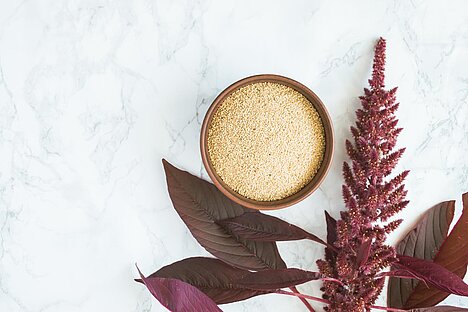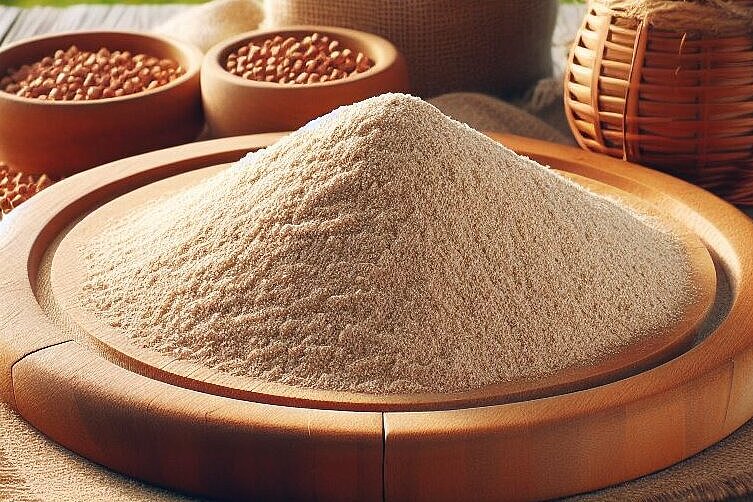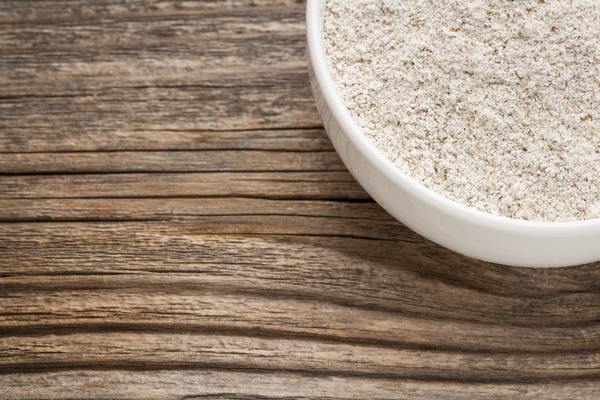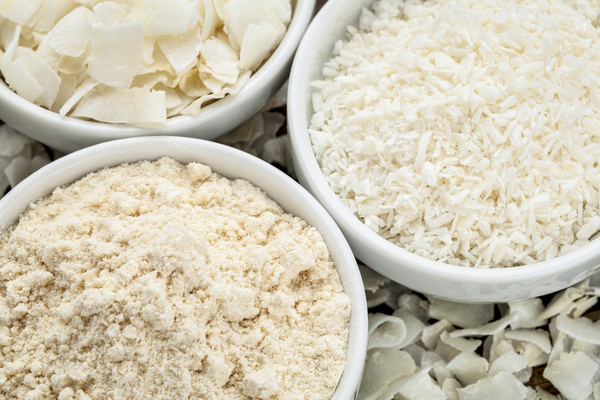Amaranth flour

What is amaranth flour?
Amaranth flour is a fine, light brown flour made from the dried and ground seeds of the amaranth plant. The seeds are very small and have a round or oval shape. They contain a lot of starch, protein, fiber, vitamins and minerals. Amaranth flour is gluten-free and therefore suitable for dogs with a gluten intolerance or allergy. It also has a mild, nutty flavor that goes well with many other ingredients.
What are the benefits of amaranth flour for dogs?
Amaranth flour has a number of benefits for your dog's health:
- It provides your dog with high-quality plant-based protein that contains all the essential amino acids. Protein is important for muscle building, cell regeneration and your dog's immune system.
- It provides your dog with plenty of fiber, which aids digestion, regulates blood sugar levels and increases the feeling of satiety. Fiber can also help prevent obesity, diabetes and cardiovascular disease.
- It contains many vitamins, especially vitamins A, C and E, which act as antioxidants and protect your dog's cells from free radicals. Antioxidants can also strengthen the immune system and reduce inflammation.
- It is rich in minerals such as iron, zinc, potassium and phosphorus, which are important for your dog's blood formation, bone and dental health, nerve function and energy metabolism.
What are the disadvantages of amaranth flour for dogs?
Amaranth flour also has some disadvantages or risks for your dog:
- It can cause bloating or diarrhea if your dog is not used to it or eats too much of it. You should therefore only ever feed amaranth flour in small quantities and well cooked.
- An overdose of minerals can occur if your dog is already being fed a mineral-rich diet or is taking additional supplements. This can lead to health problems such as kidney stones or joint problems. You should therefore always pay attention to the total amount of minerals your dog is eating.
- It can cause allergies or intolerances if your dog is sensitive to certain ingredients. This can manifest itself as skin rashes, itching, vomiting or diarrhea. You should therefore always look out for possible signs of an allergic reaction and consult a vet if in doubt.
How can you feed amaranth flour to your dog?
You can feed your dog amaranth flour in various ways:
- You can give it as a side dish with meat, vegetables or fruit. To do this, you should boil the flour with water or stock to make a porridge and leave to cool. You can also add a little oil or butter to improve the taste and increase the fat intake.
- You can use it as an ingredient for homemade dog cookies or cakes. To do this, you should mix the flour with other types of flour, eggs, honey, fruit or vegetables to make a dough and bake it in the oven. You can also add various spices or herbs to give the cookies or cakes more flavor.
- You can use it as a binding agent for meatballs or pies. To do this, mix the flour with minced meat, eggs, vegetables and spices and shape into small balls or patties. You can then fry them in a pan or bake them in the oven.
Amaranth flour is a gluten-free flour made from the seeds of the amaranth plant. It has many benefits for dogs as it is rich in protein, fiber, vitamins and minerals. It can be used as an ingredient in homemade dog cookies or mixed into food as a porridge. However, amaranth flour should only be fed in small quantities, as it can otherwise lead to obesity, excess oxalic acid or intolerance. When preparing amaranth flour for your dog, you should always cook or soak it well and observe how your dog reacts to it.
Properties 7
Are you looking for other ingredients with a specific property?
Just click on them to find more.
If you notice any signs of hypersensitivity or poisoning in your dog, you should see your vet immediately. We are not a substitute for a vet, but we try to be as accurate as possible. Every dog reacts differently and we recommend you get a second opinion or consult your vet if in doubt.
Stay healthy and take good care of your four-legged friend!😊
Similar to Amaranth flour
Quinoa flour has several benefits for your dog's health that can make it a valuable part of their diet. Here are some of them: Quinoa flour is rich in essential amino acids that dogs can't make...
Buckwheat is not a real grain, but belongs to the so-called pseudo-cereals such as quinoa or amaranth. This means that it does not contain gluten and is therefore suitable for dogs with a gluten...
Rice flour has several benefits for dogs that you should be aware of. For one, it's easily digestible and can help regulate digestion in case of gastrointestinal problems or diarrhea. Secondly, it...
Coconut flour is a by-product of coconut oil production. After the coconut meat has been pressed to extract the oil, a dry and fibrous residue remains. This is then ground into a fine flour that has...



